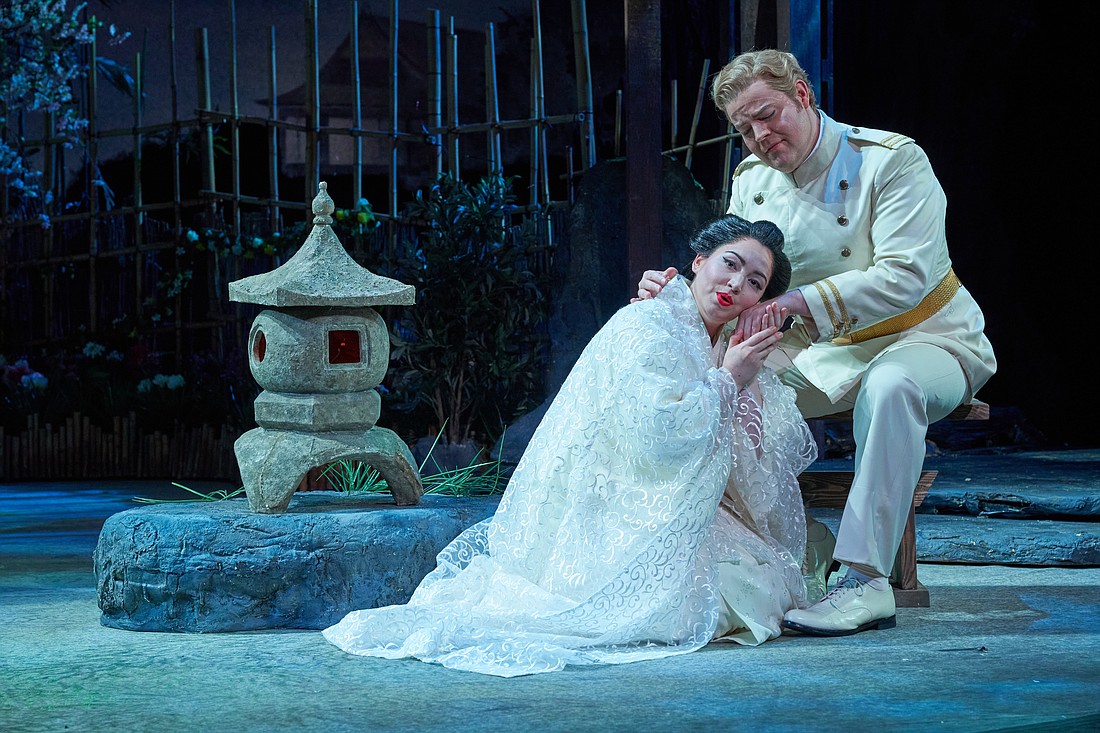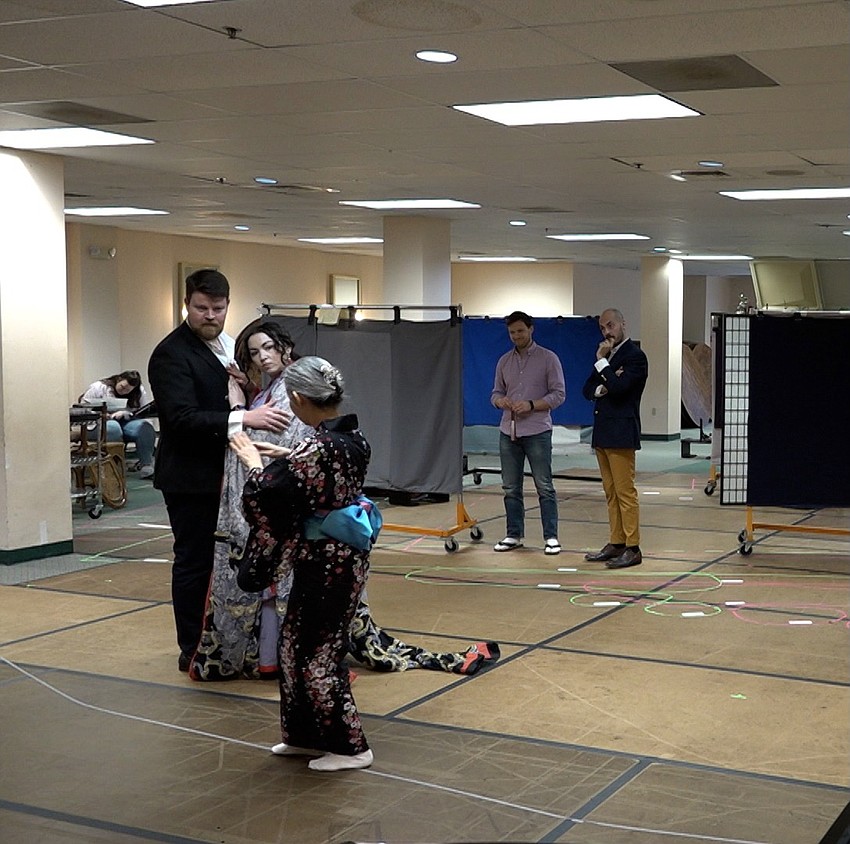- July 26, 2024
-
-
Loading

Loading

The deepness of an "ojiji" (bow). The way a geisha holds her "sensu" (folding fan) to giggle behind. How high her arms lift in a "gofuku" (kimono). The way feet move across the stage wearing "uwabaki" (traditional Japanese slippers) and "tabi" (socks).
These are some of the actions studied by cast members to train for The Sarasota Opera’s 2023 production of Puccini’s “Madama Butterfly.”
Sarasota Opera Stage Director Stephanie Sundine brought New York City-based movement coach Yoko Yamashita to Sarasota for a three-day training session with the opera.
Sundine wanted to make sure that the character Cho Cho San (Butterfly), the chorus of geishas and others in the production would have an accurate Japanese movement vocabulary to draw upon while performing the iconic opera.
Sundine, who was an opera singer for 25 years and has been a stage director for about 25 more, had worked with Yamashita before. She knew that Japanese movement training would go a long way toward establishing the authenticity of a revered work that has been performed worldwide for nearly 120 years.
From its 1904 premiere at Milan’s Teatro alla Scala to the Sarasota Opera’s 2023 Winter Festival, “Madama Butterfly” has emerged as one of the most beloved and recognized operas in the world.
The plot revolves around Cho Cho, a young geisha also known as Madama Butterfly, who falls in love with American naval officer B.F. Pinkerton only to be so tragically betrayed that she takes her own life.
As one of the most frequently performed operas in the world, “Madama Butterfly” is an enduring success story. The Sarasota Opera alone has staged it nine times since 1968. Five of those seasons — 1994, 2007, 2011, 2017 and now in 2023 — have featured Maestro Victor DeRenzi as conductor.
With great achievement, however, often comes controversy. Problems with public and critical perception of “Madama Butterfly” surfaced after the Japanese bombed Pearl Harbor in 1941. At that time, the opera was deemed to be inflammatory – especially given its depiction of American naval officers behaving badly. “Madama Butterfly” was even formally banned at New York’s Metropolitan Opera during World War II. More recently, it has been criticized for a range of issues including perpetuating Japanese clichés and caricatures, patriarchism, Orientalism, cultural appropriation and racism.
Some of those problems may have been inevitable. Not only was “Madama Butterfly” composed over a century ago during a less enlightened era; no one involved in its original creation was Japanese or even had visited the island nation. The plot came from a one-act play written by an American in 1900 based partly on an 1898 American short story inspired by an 1887 French novel.
Soprano Raquel González, who makes her Sarasota Opera debut as Cho Cho San, (Butterfly) in the latest production, is no stranger to the role. The three-time Butterfly veteran notes the complexity in staging the work for modern audiences. Some of this involves balancing cultural shifts of perception in recent years with the fact that Puccini describes exactly what he wants Butterfly to do in the score and more.
González says she was familiar with the style of movement taught by Yamashita, “but when you first learn it there’s a steep learning curve,” she says.
Authenticity is found in learning the details: how deeply to perform a particular bow, how to take small, narrow steps and the proper way to kneel in a kimono.
“Butterfly is not just Japanese. She is also a trained geisha at the turn of the century,” González notes. “As an American woman in 2023, I want to honor Puccini’s (instructions) and the authenticity of Japanese movements.”

According to Sundine, learning to use a folding fan in different situations and mastering the depth of a bow, which depends the relationship with the person being greeted, were highlights of the three-day Japanese movement training.
Sundine describes how, at the start, “a lot of the geisha chorus wanted to just fan themselves,” instead of using the prop to be coy and friendly, which is part of the geisha’s mannerisms. Now members of the chorus giggle behind their fans, then point and something and giggle some more, she says.
There’s a world of nuance when it comes to performing a bow in Japan – and not just on stage. For example, "shaku" is a simple 15-degree bend or nod of the head; "keirei" is a 30-degree tilt to show respect; and "saikeirei" is a full 45- to 90-degree bow.
Both Sundine and González agree that authenticity is key, but note that it’s also important to understand what movements will work on stage. “With respect to the language of (Japanese) movement, we sometimes had to scale up for the opera stage,” says Sundine.
For this, the director worked with coach Yamashita to choose and alter movements for certain situations. When performing in a kimono, “you never want to raise your arms above shoulder level,” says González.
“Having someone like Yoko develop a specific language (of movement) is key to honoring both Puccini’s work and the sensitivity of the culture we are in today,” Sundine says.
Correction: This article has been updated to correct the spelling of Raquel González.